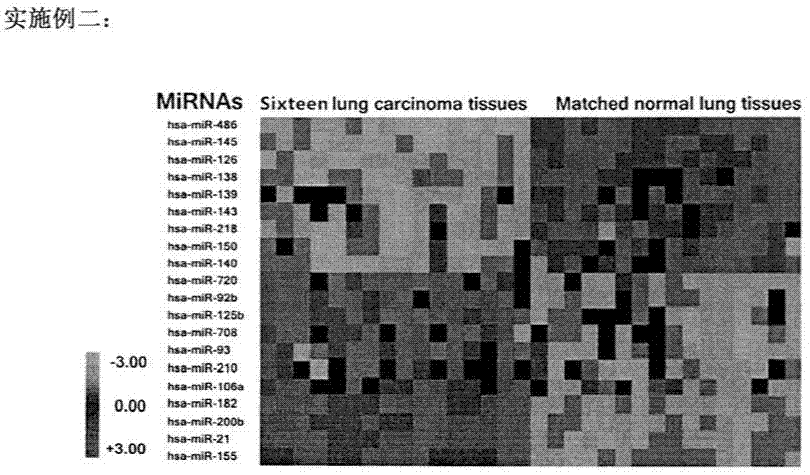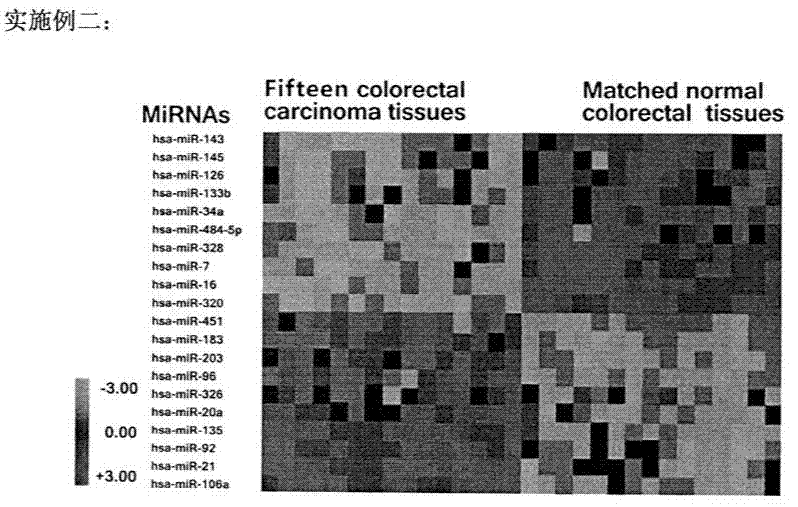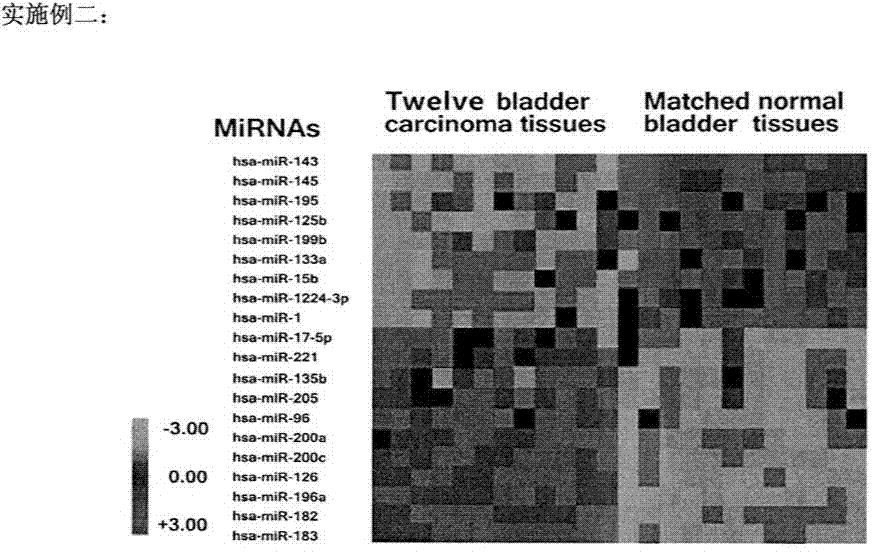Detection of microRNAs in excreta as early diagnosis biomarker of lung cancer, colorectal cancer and bladder cancer
A colorectal cancer, excrement technology, applied in the field of medical diagnosis, can solve the problems of poor specificity and low sensitivity
- Summary
- Abstract
- Description
- Claims
- Application Information
AI Technical Summary
Problems solved by technology
Method used
Image
Examples
Embodiment 1
[0032] Tissue samples were collected and placed in cryopreservation tubes, placed in liquid nitrogen tanks, and then transferred to -80°C refrigerators for storage. Sputum samples were stored at 4°C after collection and processed within one week. Aliquot each sputum by 200μl into 1.5ml RNase free microcentrifuge tube, and add 400μl Sputolysin TM (0.1mg / ml, sigma) solution, vortex until the viscous sputum dissolves, incubate at 37°C for 30 minutes, and finally store the homogenized sputum at -20°C. After the stool samples were collected, 200 mg of each stool was divided into cryopreservation tubes and stored at -80°C. About 50ml of the urine sample was collected and centrifuged for 10 minutes, the supernatant was removed and the precipitate obtained was washed twice with PBS and frozen at -80°C. RNA was extracted from all specimens within one week after cryopreservation.
[0033] 2. Extraction of RNA
Embodiment 2
[0035] 1000μl Trizol TM (invitrogen) was added to the centrifuge tubes for storing specimens (including 25 mg of frozen tissue specimens ground into powder by liquid nitrogen grinding method, 200 μl of homogenized sputum, and frozen stool specimens by liquid nitrogen grinding method as described in Implementation 1. Grind into powder, 50ml of urine precipitate after centrifugation), mix by pipetting and then vortex for 20 seconds. Then add 200 μl chloroform and vortex mix for 20 seconds and let stand at room temperature for 5 minutes. The mixture was centrifuged at 4°C for 15 minutes to separate it into an aqueous phase and a red organic phase. Carefully transfer the aqueous phase (about 500 μl) to a clean 1.5ml centrifuge tube, add 4 μl of glycogen co-precipitation agent (Ambion) and 5000 μl of isopropanol, mix gently and place at room temperature for 20 minutes. Then centrifuge at 12000rpm for 10 minutes, centrifuge at 4°C for 15 minutes to precipitate the RNA, wash the pr...
Embodiment 3
[0040] Use of reverse transcription of miRNA MicroRNA Reverse Transcription Kit, Primers, and StepOnePlus TM The real-time quantitative PCR system (Applied Biosystems Inc.) was performed according to the instructions. The RT Master Mix for each reaction is configured as follows:
[0041]
[0042] Place RT Master Mix in a Nuclease-free PCR tube, mix gently and place on ice. Add 3.0 μl of miRNA primers and 5 μl of RNA extracted in Example 2 to each RT Master Mix, the final reaction system is 15 μl, and centrifuge at 1500 rpm for two minutes after mixing. Place on a PCR instrument at 16°C for 30 minutes, 42°C for 40 minutes, 85°C for 5 minutes, and 4°C for about 50 minutes, and store the generated product at -70°C.
PUM
 Login to View More
Login to View More Abstract
Description
Claims
Application Information
 Login to View More
Login to View More - R&D
- Intellectual Property
- Life Sciences
- Materials
- Tech Scout
- Unparalleled Data Quality
- Higher Quality Content
- 60% Fewer Hallucinations
Browse by: Latest US Patents, China's latest patents, Technical Efficacy Thesaurus, Application Domain, Technology Topic, Popular Technical Reports.
© 2025 PatSnap. All rights reserved.Legal|Privacy policy|Modern Slavery Act Transparency Statement|Sitemap|About US| Contact US: help@patsnap.com



